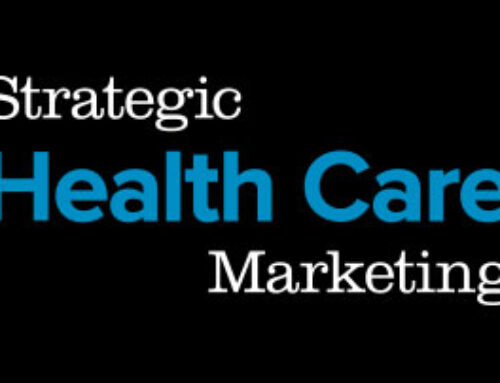August 13, 2025
The U.S. health care system is full of contradictions: more care, more technology — and more frustration. This opinion piece unpacks the growing disconnect with health care and what marketers can do to help close the gap.
// By Ross K. Goldberg //

Earlier this year, I had the distinct honor of being one of the speakers at the 9th annual Rosenman Symposium, conducted in conjunction with the University of California, San Francisco. The symposium called together a select group of industry visionaries, policymakers, and top executives, uniting their diverse perspectives to discuss “what’s really broken in health care and what it will take to fix it.”
What became abundantly apparent is the curious and troubling dichotomy going on in America today, and health care executives and marketers must take note. On one hand, more care is being delivered than at any other time in our nation’s history. But at the same time — and despite this cheery reality — the public expresses a high level of frustration with the health care system, has lost a degree of confidence in both providers and payers, and doesn’t believe that the system works in their best interest.
This is more than just a slow leak in the tire. Increasingly, the public sees that hospitals:
- Lack individual identity (the acceleration of mergers and consolidations has contributed significantly to this belief)
- Have transformed from charitable institutions to purely business enterprises
- Are impersonal and detached from the community
- Put economics ahead of patient care
- Have abandoned their traditional role as advocates for patient needs.
Tectonic rumbles often precede an earthquake, and the continuation of this discontent threatens to plunge the country into a major public health crisis. And while volumes can and should be written as to how we have arrived at this worrisome point in time, far more immediately important is what the industry can do to reverse this disturbing trend. Among the many possible places that demand our unwavering attention, here are four:
- Make health care more friendly. “Friendly” is not a scientific term or a high-handed technical word, but neither is “happiness,” and that somehow made its way into our founding document of Independence. If those of us who are in health care marketing were honest with ourselves, we would have to admit that health care sadly lags behind most consumer services when it comes to friendliness — from the technical jargon we casually use to the hurdles in navigating the health care system to the barriers and potholes many Americans face in simply trying to access care.
Making health care more friendly begins with putting the wants and needs of the patient first, but most important, it also means demystifying what we do. That will require these aspects of honesty: Truthfulness, Non-deception and Candor.
And while we are demystifying health care, let’s do the same with health insurance, which is way too complicated. Most people don’t really know what is or isn’t covered until they need it — and then, like a bad prom date, they are often in for a surprise. That surprise leads to anger and a feeling that they have been duped.
- Arrive at an understandable way to measure quality. We’ve heard this one so frequently that it makes Groundhog Day seem fresh. But it’s worth hearing again. Yes, progress has been made in this arena, and there have been some noble intentions in both the public and private sectors through the introduction of quality dashboards and assorted other quantifiable metrics (assuming the public can find them). But we still have miles to go and promises to keep. It may be an overused cliché, but the fact remains that it is still easier to find a hotel or a car that fits a person’s individual quality standards than it is to select a physician or hospital. But it shouldn’t be.
U.S. News and World Report? Healthgrades? Leapfrog? The Joint Commission? AHA? These and others may all be meaningful to those of us in the industry, but how can the public discern one from the other? What is it precisely that these organizations are rating? What matters and to whom? The jury is still out as to whether or not CMS’s STAR rating, pay-for-performance metrics, or individual state initiatives will bring about higher quality in ways consumers can understand and thus better engage in intelligent decisions regarding their care. But until that time, this remains an issue the industry continues to dance around. I only hope we don’t slip and fall on it.
- Set realistic expectations. Modern medicine is truly miraculous, and we have come a long way since the discovery of penicillin. Cancer and HIV are no longer automatic death sentences, and wondrous pharmaceutical advances are giving hope to millions with a whole host of chronic conditions. Yet the sobering fact is that despite good intentions, medicine is an imperfect science. Good physicians can disagree over the best course of treatment; we can’t always cure disease by spending more money, and even with “best practices,” doctors don’t always know all the answers.
Intense marketplace competition has permitted words like exceptional, world-class, and superior to creep into our nomenclature. By doing so, hospitals and doctors find themselves not only battling disease but also battling the expectations we have set. We need to be careful not to let that happen, for as has been written, expectations are the death of happiness.
There is a reason physicians “practice” medicine, and it’s the same reason baseball players practice every day. It is to get better. Nobody goes to the ballpark expecting their favorite star to hit a home run every time at bat, and hospitals and physicians can’t hit a home run with every patient that comes through the door. In baseball, if you fail seven out of 10 times, you end up in the Hall of Fame. Let’s rejoice in the fact that health care’s success numbers are far better than that, but let’s also admit to our community that nobody bats 1.000.
- Embrace the generational shift taking place. Past generations seldom questioned whatever their doctor told them. Baby boomers were the first to ask questions and proactively seek answers. Millennials, we’ve come to learn, have a far different view of health care than either their parents or grandparents. Loyalty to physicians and brands is not as important to them as convenience, and they welcome telemedicine, urgent care centers, mail order pharmacies, commercial retailers, and various forms of alternative medicine as ways of getting health care on their terms.
To millennials and younger generations, the old rules don’t apply, and they make up new ones as they go. Trouble is, health care for the most part moves at glacier speed, and while some organizations are nimble enough to change with the times, the industry has not responded as quickly or as efficiently as this new generation demands.
As the first generation to grow up with the internet, millennials are angry when they can’t get the same responsiveness from their health care providers or insurers that they get from Apple, Starbucks, Patagonia, or any number of retailers who bend over backward to personalize their experiences and cater to their needs. Intellectually, most hospital leadership knows this. But few truly embrace this new dynamic as fully or as passionately as they should.
Marketing and communications teams are on the front lines of all these issues and need to find ways not only to communicate effectively to their external stakeholders but also exercise the internal influence required to make needed changes happen.
Ross K. Goldberg is president of Kevin/Ross Public Relations and former chairman of the board of trustees of Los Robles Regional Medical Center in Southern California. He is a member of the editorial advisory board of Strategic Health Care Marketing.
https://strategichcmarketing.com/health-cares-and-americas-troubling-dichotomy/



